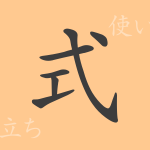The elegant presence of “鹿(しか)” blending into the Japanese landscape emits a mystical aura. This animal, deeply rooted in Japanese culture and language since ancient times, is also a familiar character in our daily lives as a common kanji. This article delves into the origins, meanings, usages, readings, and idioms or proverbs involving “鹿(しか),” exploring its fascinating charm.
Origins of 鹿 (Etymology)
The origin of “鹿(しか)” traces back to ancient China, where it began as a pictograph mimicking the actual appearance of a deer. Created by ancient people to capture and convey the characteristics of deer, this kanji gradually evolved over time into its current form. In Japan, deer have been considered sacred animals since the Kofun period, appearing in numerous myths and legends.
Meanings and Usage of 鹿
The kanji “鹿(しか)” directly refers to the four-legged mammal, particularly species in the Cervidae family. Figuratively, it can symbolize beauty or nobility. For example, in classical literature, beautiful noblewomen were often compared to deer.
Readings, Stroke Count, and Radical of 鹿
The kanji “鹿(しか)” showcases the depth of the Japanese language through its readings and structural elements.
- Readings: The on’yomi (音読み) is “ロク,” and the kun’yomi (訓読み) are “しか” or “か.”
- Stroke count: It consists of 11 strokes.
- Radical: The radical is “鹿部(しかへん),” indicating its association with deer.
Idioms, Phrases, and Proverbs Using 鹿
Idioms, phrases, and proverbs containing “鹿(しか)” reflect the Japanese people’s fondness and respect for deer.
- 鹿児島(かごしま): A place name said to be derived from the fawn-like pattern, “鹿の子模様(かのこもよう).”
- 鹿の角(しかのつの): A metaphor for something that changes as it grows.
- 鹿を追う者は山を見ず(しかをおうものはやまをみず): A proverb meaning those who pursue immediate desires may lose sight of important matters.
Conclusion on 鹿
The world encapsulated in the single kanji “鹿(しか)” transcends mere letters, reflecting Japanese perspectives on nature, aesthetics, and the profoundness of language. From the etymology to idioms involving “鹿(しか),” we hope this exploration deepens your interest in the Japanese language.

























